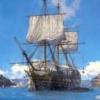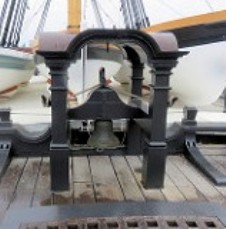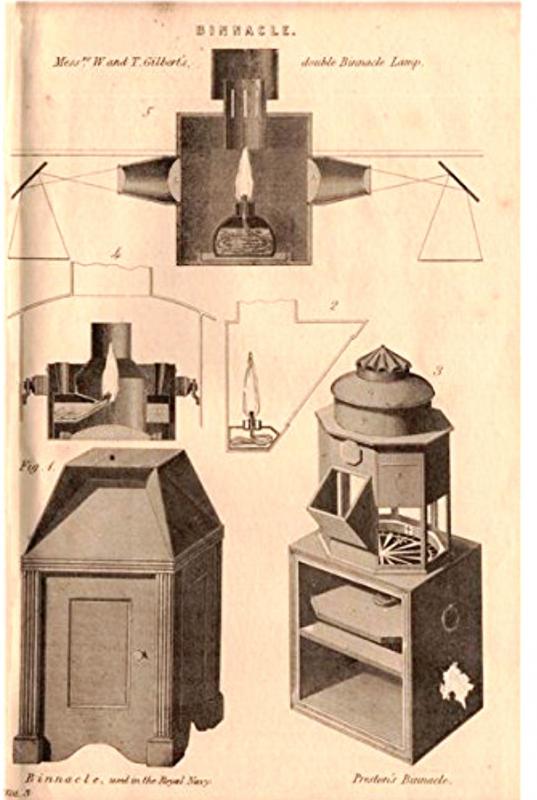-
Posts
512 -
Joined
-
Last visited
Content Type
Profiles
Forums
Gallery
Events
Posts posted by piratepete007
-
-
Geez Greg, you make me blush but thanks for the compliment. This is work that I totally enjoy.. Collaboration between the various Royal William builders and myself enables me to create something useful for others to follow. However, this is not my main work as I am frenetically busy writing a book on background resources for model ship building.
Pete
- mtaylor and marktiedens
-
 2
2
-
Mark, I changed the above photo to re-inforce your point about stopping the rotating beam from moving (not a great photo but it shows the use of rope as you mentioned).
Pete
-
Mark & Greg - your comments prompted me to do a little research and Lavery wrote that both the Royal William & the Victory had a hand wheel attached to the rotating beam which enabled the belfry to be relatively short in height. Just out of interest, the attached photo shows the bell & belfry for the Victory where you can just see a 'crank' handle on top of the beam. Maybe there was a hand wheel in the original build and before a re-fit ?
Pete
-
Ah ... those little extra touches are, dare I say, exquisite !! Well done Mark on keeping this project going at a rapid rate.
Pete
-
Vince - this is indeed a very time-consuming part of the build ! Well done on the meticulous detail shown.
Pete
- mtaylor, marktiedens, DenPink and 1 other
-
 4
4
-
For those interested, I found this link in relation to binnacles.
http://modelshipworld.com/index.php/topic/8186-thinking-things-throuthe-bitticle-or-binnacle/
Pete
-
-
Hello All,
I am developing a new resource called 'Background Resources' to be posted onto the MSW/ NRG website only and have received immense support from so many members. This exercise has no commercial implications whatsoever.
At the moment, I am writing about ship binnacles but am having trouble locating images/ drawings/photos of the Preston and Popham type of binnacles [they followed the standard compass + lamp(s) cabinet-type binnacle form that existed during the 17 - 18C that so many of us are familiar with].
These latter binnacles were more of a taller and narrower upright box with slanted sides on the top section. Crew could look into these forms through glass sections; they were the precursor to all the binnacles that were in use from 1860 onwards.
So ... if anybody can help me with any images, etc., that I could publish, that would be most appreciated. Maybe some photos of these Preston/ Popham binnacles that have been built on models ? I found some images on the internet but they were from Google digitized old publications and I am not sure if I can use those. The last thing I want to do is to infringe on any copyright and that is why I have approached so many MSW people to seek the permission to use their photos.
Any help would be appreciated.
Pete
-
Hi Tom,
Far less humid down in Adelaide !
For great advice and a vast array of colours, you cannot go past the Games Workshop stores (I see there are stores in Queen Street Brisbane and at Chermside to name just two). They will advise you on wet brushing and dry brushing. You are guaranteed of getting just what you want.
Pete
-
Thanks for taking the time to post that photo Captain Steve. I'm just busy writing up a few pages of text (for MSW) explaining ALL the different methods of bending wood that I can find. Probably buy into a few arguments !!!!
Pete
- thibaultron, mtaylor, CaptainSteve and 1 other
-
 4
4
-
When I looked up images for 'hair curling iron', I saw so many different forms - any advice as to what iron works well when bending wood ?
Pete
- Canute, thibaultron and mtaylor
-
 3
3
-
Keith,
Did you make any further progress in your investigation ?
What I see in your photos posted are possibly fish davits but not sure about them having sheaves. In the time period 1650 - 1740, there was one full breadth fish davit athwartships and forward of the foremast and it was man-handled to project over either side. There was a tackle underneath at the outer ends for fishing the anchor once the stock was clear of the water. Post about 1773, the fish davit was shortened and could be moved to either side. Whether they had sheaves or not is besides the point. I cannot see the beams shown being used to lift the anchors up but I could be wrong.
As has already been pointed out, they usually contained ring bolts at the outboard end - one on top for the topping lift and one each side for stabilizing guys. The inboard end was seated in a hinged metal shoe mounted either on the fore channel or on the deck itself.
Interestingly, Mondfeld suggests the use of d-blocks in the 14 - 16 th. centuries that were mounted on the hull side. A line through this block was used to haul the anchor out of the water. That would fit in with your time frame ? Cathead beams were used when the anchors became heavier and started damaging the sides. However, I can find no clear indication of when these beams became the norm so the transition from block to beam is rather vague.
Pete
-
-
-
-
Pat - thanks for info re Marquardt and this is another book for me to get. Your words are much appreciated. I may have to draw a symbolic figure but maybe somebody will come up with a drawing ?'
Duff - I did try to use Falconer but could not find any reference. Thanks for trying to find an image. ( Yeah, that 'piratepete' was my nickname given to me by my beloved students !)
Pete
.
-
I am gathering some information about catheads as they were used from the 16C through to the 19C - for posting on MSW - and am stumped over the term 'D-block'. This block was used prior to the external cathead coming into existence. Can somebody explain the specifics of such a block as well as locating a suitable diagram or photo to include with it ? This is not being published elsewhere but I would still like to be able to ask for permission to use such a diagram or photo.
Pete
-
-
Druxey, the fore knight and main knight aft of their respective masts had long pins down to a lower deck; the mizzen knight was forward of the mizzen mast and supported by standards (i.e. no long pins).
In summary then - knightheads/ bollards around the bowsprit and any other singular bitts are now termed bollards seems the way to go.
Pete
-
I wish to add to what I said yesterday but first, have a look at this incredible scratch build of a 1660 ship by YankeeD and amongst his photos, there is a main knight (bitt) aft of the main mast opening.
My immediate problem is one of terminology - RC Anderson talks about these singular, short bitts as 'knights' whilst Goodwin and Mondfeld refer to these same bitts as 'knightheads'. The use of these bitts was phased out around 1650 - 1660 and replaced by the bitt pairs soon to be followed by the addition of the cross piece. It seems to me that we have relics of these 'knights' in the form of the knightheads that support the base of the bowsprit. So it looks like we can use the terms 'knight' or 'knighthead' ?
My second problem is to find a photo of an actual 'knight' bitt that I can use when publishing my work back onto the MSW.
Pete
-
Druxey,
Thanks for replying.
R.C.Anderson makes a brief reference to French & Dutch models & drawings that showed them in use and he assumes that probably English ships would have used them as well but does not make any specific reference. I have found drawings of a German ship that interestingly (and RCA describes that) these bollards/ bitts/ knights were below foc'sle/ quarter deck level. Eventually, they 'surfaced' up to deck level. Time .... 16/ 17 C. Goodwin, page 219, rightly makes reference to this bitt (and others) under the heading of 'Topsail Sheet & Jeer Bitts'
Pete
- CaptainSteve and mtaylor
-
 2
2
-
I am looking for some assistance regarding a photo of a knight (bitt) that I could add to a resource file I am constructing to post onto the MSW. Little has been written about these singular belaying points and whether they were fitted or not depended on the method of hoisting the lower yards. They were also used for the line that hoisted the topmast.
Knight bitts were generally short, had four sheaves and an eye bolt on one side. They were mounted slightly off-center (to avoid the stays) and just aft of the main and fore masts. There was also a much smaller one mounted forward of the mizzen mast. Typically, they passed down to a lower deck to enable stronger fixing. Interestingly, they were NOT square in cross-section.
In time, these were replaced by the typical bitt pairs with their associated cross pieces.
Any help with a useable image - and any extra information - would be much appreciated.
Pete
-
I had a fascinating discussion with Mike over the provenance of the La Renommee a few weeks ago and his incredibly balanced views expressed above do him much credit. Sure, others could come weighing in with their opinions but I hope this log stays on track without too many distractions. I appreciate his open mind and now in his hands he has a beautiful 'little' ship.
Pete
-
Looking good Mark ! Those short sections of head timbers between the rails must have tried your patience.
Pete





Royal William by marktiedens - FINISHED - Euromodel - scale 1:72
in - Kit build logs for subjects built from 1501 - 1750
Posted
Mark - now that's something to behold. Looks really great !
Pete